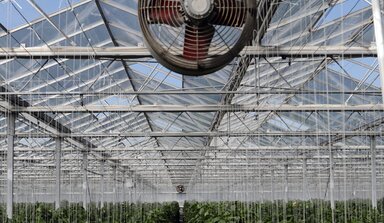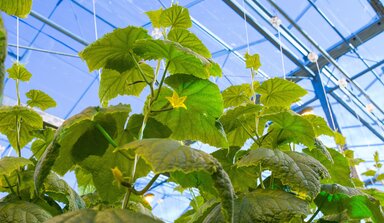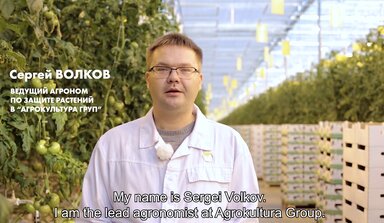Every crop gets its own made-to-measure coating
In southeast Austria it is impossible to grow greenhouse vegetables without coatings. Frutura has elevated crop protection into an art. Through means of continuous improvement, Frutura’s operating managers have developed an optimal approach for every variety. This means that Austrian consumers can purchase quality products throughout the year, even in hot summers.
The climate in Bad Blumau (Stiermarken) is a real challenge. ‘At these temperatures you can’t really grow tomatoes. This is what a consultant told me 15 years ago when the outdoor temperature was 25-26oC,’ says Martin Gunda, Head Crop Cultivation, laughing. The fact that Frutura is succeeding nevertheless is a question of workmanship and the continuous perfection of the combination of coatings. ‘We are highly dependent on coatings here and the changing climate makes finding a good strategy even more challenging,’ he says.
Frutura is a company that grows and markets its products. The greenhouse in Bad Blumau, one of the largest in Austria, is equipped with the most modern technologies. Part is covered by diffuse glass. Another special feature is that the farm is heated using geothermal heat. As a result, the current gas crisis is not affecting the company.
Frutura has 26 hectares of greenhouse cultivation: tomatoes of all kinds, sweetpoint peppers, cucumbers, aubergines and radishes. Seven acres are devoted to organic crop cultivation. In addition, they also have plastic covered tunnels with tomatoes and aubergines.
Climate change
In summer, the daytime temperature runs up to 36-37°C. ‘While we are able to cope with this, the humidity makes it very difficult. Often it is very dry, but sometimes it is too humid after a short rainfall. A major drawback especially is the warm nights; often it is still 30°C by midnight. The 24-hour temperature average in the greenhouse then ranges between 25°C and 28.5°C. That’s very high. We apply the full range of ReduSystems coatings to improve crop conditions,’ says Gunda.
He clearly sees that the climate is changing. ‘We are faced with different conditions that make things more difficult. The winters are milder than in the past and the winds are stronger. In the spring we already need to take higher levels of radiation into account. We experienced extremely dry conditions between mid-April and mid-May on a number of occasions. By contrast, average humidity in the summer has increased. And then there are the warm nights. Growing in the summer has become a big question mark,’ he says.
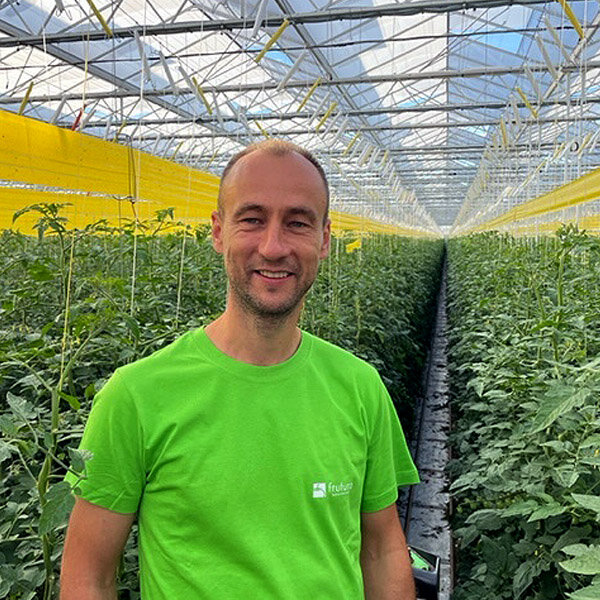
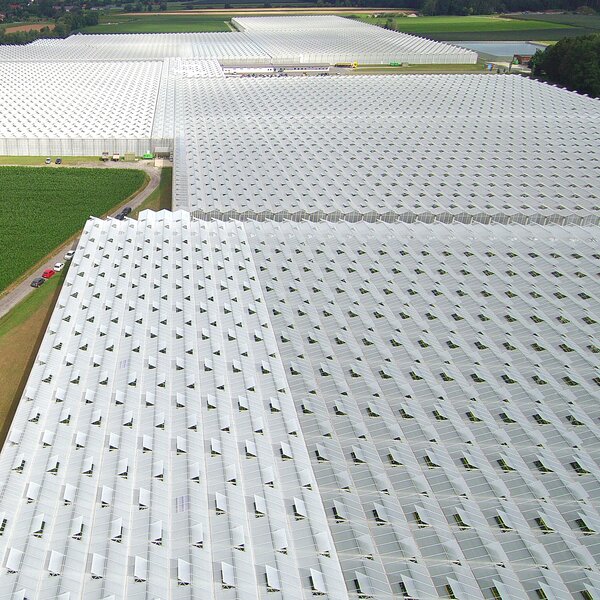
Coating in phases
Every crop responds differently to these conditions. Over the years, the three operating managers, Martin Gunda, Jan Ravensbergen and Marcel Rohrborn, steadily improved the method used to protect crops with coatings and attuned these coatings to each specific crop.
There is a comprehensive plan for each greenhouse, but it would take more than the space available here to explain it. The coating is often built up in phases. ‘For example, for the sweetpoint peppers we start with 10 buckets of ReduFuse IR per ha towards the end of April. Six weeks later we apply a new layer on top of this; another 10 buckets/ha. In June we apply another protective layer consisting of two buckets of ReduSol mixed with three buckets of SprayChalk on top of these two layers. In summer we may apply another extra layer of ReduSol with SprayChalk on top of this,’ Gunda explains.
Thirteen buckets of ReduHeat per hectare are applied to the non-lighted crops under diffuse glass. An extra thin protective layer of two buckets of SprayChalk mixed with one bucket of ReduSol is added to this in summer. ReduFuse IR serves as the base for lighted tomato crops. The ReduSol/SprayChalk mixture also provides extra protection in emergency situations.
Tasty tomatoes
These are just a few examples from the entire coating plan. ‘We are constantly adjusting it by crop, variety and planting date, and learn from our experience. We use a plan-based data-driven cultivation approach, for example by using the ProJoules programme for sweet peppers. Plan-based coating is an integral part of this. We are very satisfied with the results. We manage to get through the summer without major quality problems. We are not the only ones who are satisfied about this. Our tomatoes are proclaimed to be the tastiest in Austria,’ he says.
Frutura has trained two people to operate the coating machine. They are capable of coating very accurately, even when it involves thin layers. Having in-house equipment and expertise make it possible to respond effectively to changing conditions at any moment.
Misting, protecting, ventilating
Aside from coatings, mobile screens and high-pressure misting also are important instruments for controlling the greenhouse climate. ‘We have two mobile screens we can use for the sweet peppers. There is only one mobile screen for the tomatoes that we especially close during seasonal weather changes when the coating layer on the greenhouse cover is still thin.’
Even when the greenhouse cover is well coated, the plants can still be exposed to direct sunlight when the vent windows are opened too far. ‘This is why we also play with the window settings. When necessary, we open them just enough on the sunny side so that there is no direct sunlight on the plants. We then open them further on the other side.’
Every year, small improvements are made to the entire strategy. Attention is paid to every detail. ‘We ensure that the glass is cleaned on time, so that we can immediately apply a coating when necessary,’ he says by way of example. ‘Perhaps we may still tinker a bit with the concentrations, but this system enables us to cultivate excellent quality vegetables, even in hot summers.’
